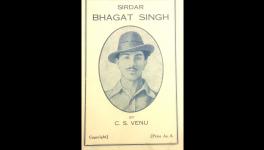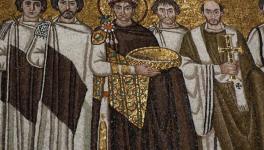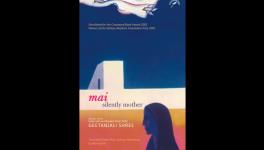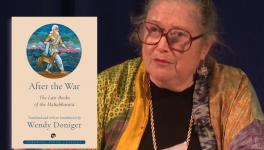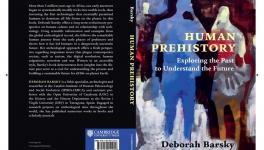“Books have been My Most Enduring Teachers…”
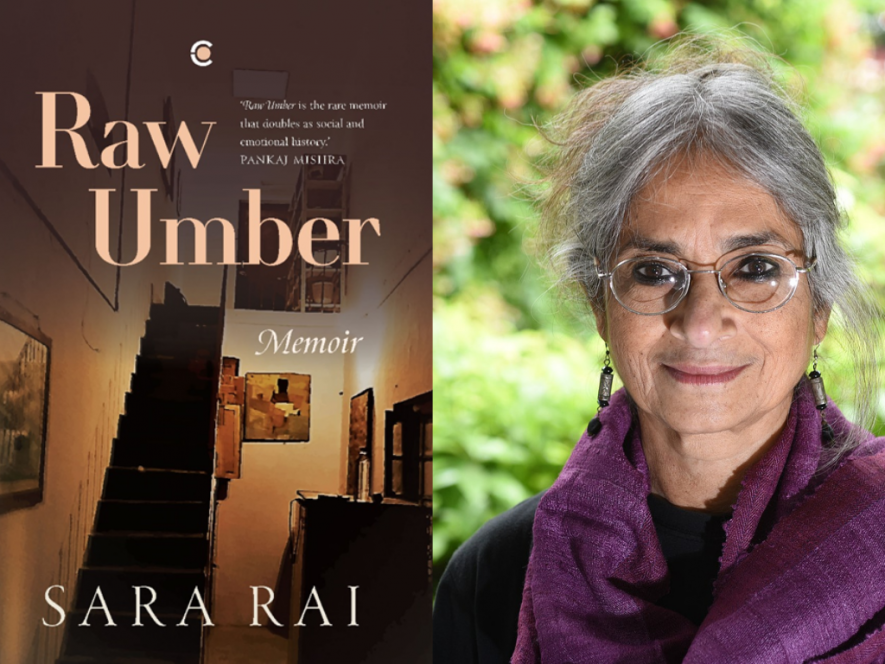
Sara Rai’s Raw Umber is a memoir that chronicles the life and times of one of India’s most illustrious literary families. In her book, Rai looks at the past, the nature of remembering and the role that memory plays in shaping a writer’s sensibility. The book talks about her early years spent in Allahabad and Banaras, her family, and what it has meant to be the granddaughter of a figure like Premchand.
In this conversation with Githa Hariharan, Sara Rai talks about the many-layered past in her book; about the slippery nature of memory and its overlap with imagination, the blurring of boundaries between the two that is inevitable for a writer.
Githa Hariharan (GH): Let’s begin with unravelling the many strands of your memoir, Raw Umber. The past, obviously, strides through the book, but it is a many-layered past. There’s the mystery of the past, partly because of the mystery that each person is, and the gaps we can never quite fill about what went on in his or her head. There’s the confusion of dates, or multiple narratives of the same event. But it is clear that you have selected which of your pasts you will write about. There’s a great deal of childhood, but almost nothing of your years in Delhi or Australia, of marriage or motherhood. What guided your selection of places, people and time? And to what extent was it planned?
Sara Rai (SR): Writing this memoir has been, in some ways, about reclaiming the past. Isn’t that what memoirs do? I’m interested in how time shapes people, homes, cities, and histories. It seems to me that the past never really dies. It lies dormant in the recesses of the mind and comes alive in the moment when it is remembered. In the process of remembering, people, places, objects—all of these things—are saved from oblivion. It may sound a little ghoulish, but I have written mainly about the people who were close to me but are now dead. I suppose I was also trying to free them from the prison of my remembrance by writing about them.
You ask about the selection of people, places, and the time about which I have written. I have to say that my childhood years shaped me in a way that later years did not. While writing the essays that eventually became this book, my childhood recall was, perhaps a little surprisingly, very sharp and close to me. There was so much already there that I did not move on to the later years of my life. Perhaps they can feature in another book! It was also a desire to begin at the beginning, but once I had got started, a certain voice took over, and that voice connected more naturally with my early years, which as I get older, begin to seem like the foundation stone to a life.
Since this memoir is composed of interconnected material, some people figure in more than one essay; and in the later essay, they are often viewed from a different angle. I suppose this has given my account the impression of a multiple, many-layered narrative. The material wasn’t planned as a book, to begin with. I was writing things down so that I wouldn’t forget, and also simply because that’s what I do. That this scribbling — which was not really meant to be seen — eventually became a book was serendipitous.
GH: How did you decide who you will write about from the family? Your grandfather, of course—as in your life, he looms large in the background of the book. So does your father, who forms something of a balancing pillar to his father in the book. But was it a conscious decision to say less about some members of the family?
SR: Oddly enough, my grandfather was not going to figure in this book at all. Writing him in was a later, considered decision, because it felt as if I was deliberately leaving him out. Well, in a sense, I was doing just that, leaving him out. His presence, I felt, would make everyone else invisible. This apprehension has, to an extent, turned out to be justified. Some have thought of this book as an account of Premchand, as seen through his granddaughter’s eyes. The figure of the physically small Premchand is so large on the literary map that he takes up all the room. Of course, the book is also about my grandfather, but I wanted it to be about other people too; about my mother’s family, for instance, which is interesting in quite another way. And I was also trying to engage with questions of language and how living in certain places can form a literary sensibility. Raw Umber is about my father, too; a solitary, reclusive figure I was trying to get to know through the medium of this book.
GH: The hold of the past; the reconstruction of the past; but also the slippery nature of memory, and its entanglement with imagination. All these you grapple with in the book. Do you find that the act of remembering changes as we age? And is the selection of memories to write about, or foreground in the writing, subject to some change with the ‘long lens’ of time? There is also the sensory past, from the houses that will not let you go, parts of Allahabad and Banaras, and most of all, the texture of childhood.
SR: I said earlier that I wrote these essays partly to exorcise the ghosts of the past that clung to me. It is a very complicated thing. I wanted to escape the past, yet I was— I am—quite submerged in it. A life, once lived, doesn’t pass but stays with you. Then in a moment of repose, and for any sort of writing this repose is necessary, you begin to remember things. All that you thought you’d forgotten surfaces again.
But the act of remembering keeps changing. The substance of people, the stuff that daily living is made up of, remains elusive. You think of something once in a certain way, and later, when you think about it again, it has changed indefinably. For everything that we remember is always and can only be a construct of our changeable mind that has its own imaginative impulses. I think human beings are fundamentally unknowable. We may spend an entire life with someone and yet be pretty clueless about who that person really is. We can keep trying to know, for instance, our parents or our siblings; each exercise in putting them down is just one more attempt at catching this unknowable element. This leads to a sort of layering in the writing.
The houses of my childhood and youth entered my awareness not only as geographical locations, but also as sensory signposts. They led me to think about myself, and not only about myself. The places that I grew up in offered me the time to observe the world around me and form impressions. I could think about nature, for example, and its slow unfolding, about people and their inner lives. Since the pace of life in my childhood was slow, I had the space to think. I realised, though perhaps not immediately, that memory does not only reside in the brain. Different parts of the body have their own memory. The hands, arms, feet, eyes, and ears remember things, and this ‘physiological’ memory is perhaps more lasting than the cerebral one. At some point, this book became an exploration of memory.
GH: I could read Raw Umber as a memoir of a reading and writing life; yours, but linked with the ‘teachers’ in your life, dead and living, at home and in school. Would you comment on such a reading?
SR: Raw Umber is not a memoir in the traditional sense. There is little, if any, linearity to the narrative. The things that one might expect from a memoir—events, for example—are more or less missing from it. Sometimes events do figure, but they are there only to clarify the larger context of lives or of people. You are right when you say that this is a memoir of a reading and writing life. It follows the growth of a sensibility. It is the voice that connects the different pieces in the book rather than progression in the usual sense, by which I mean happenings, or incidents. I have tried to understand the inwardness of people and the patterns, often indecipherable, that are found to exist at the end of a life. Perhaps they could be called patterns of fate, which is really a convenient word for what we don’t understand.
There have been many teachers in my life – to begin with, my parents at home, from whom I picked up the first and necessary lessons in the use of language. Then there were the teachers at school, often German nuns,, who were very precise about the education that was imparted to us. I have not forgotten their English lessons, the emphasis on particular syllables if a word was to be pronounced correctly. How the spelling of the same word could change, depending on whether it was used as a verb or a noun. Then there were the teachers at the universities where I studied. These, of course, have been my formal teachers, but I have also learnt from people like my gardener or my cook, valuable lessons in colloquial speech, or in the exercise of imagination when looking at reality.
But if asked at gunpoint, I would confess that books have been my most enduring teachers. They are largely to be blamed for how I have turned out. And at the end of it all, I cannot resist saying — at the risk of being exasperating — that life itself has been a teacher in the most fundamental sense! I know this is self-evident and does not really need to be stated.
Also read: An excerpt from Raw Umber
GH: A couple of questions recur like motifs in the book: Who is a writer? What is she supposed to do? You quote Premchand as saying, poetically, “…I am like the grass reed swaying by the river and the wind makes sounds within me. That’s all there is to it. I have nothing of my own … my story is the story of the winds that sang within me…” But he also felt strongly about literature with a ‘purpose’. Starting with Premchand, would you describe the view of the writer’s role/ life taken by the writers you feature in the book, including yourself?
SR: For a writer like Premchand, it’s the sort of wind that blows through him, which makes him what he is. The imagery that he uses of ‘grass reed’ and ‘wind’ may sound poetic, but he was using it to indicate how the wind of the times blew through him. And that wind told of the political and social issues that India was grappling with. Like the grass reed by the river that bends to the wind, he could not help writing about these turbulent times that he was witnessing. It was all he could do, and all he wanted to do. He became the medium through which the story of the times got told. It is typical of him that he erased himself from this story. The author is largely absent from his work, except in the voice, of course. For him, the story of the winds is literature with a purpose. We must remember that he was a man in a hurry. There was so much to be written about, so many social evils that he wanted to address. Instead, tales of adventure and romance were being written. This went against the grain of his ideas about what a writer ought to be. He was the first writer in Urdu and Hindi, perhaps the first Indian writer, who put the common man on the literary stage. He wanted to live out his ideas in his own life, for instance, his views on widow remarriage, by marrying a child widow himself.
The role of the writer? I think it is important for a writer to tell it as it is. This does not mean being out there on the street, noting all that happens, putting each political or social event onto the written page. That would be no different from reportage. In my opinion, the writer’s role is to dwell upon the sights and situations that create a ripple in her mind long before she has found the words to write about them. Her imagination must get to work, and she must express what she has seen in her own voice after a complex process of distillation. Characters must be lifted out of physical surroundings and their lives illuminated in the act of writing about them. This can only happen if it’s done with empathy, which is vital for any piece of writing. I think this is what the role of a writer is—to record the particular details of a life which then acquire universal resonance. The material of literature, the warp and weft of it, is held in a delicate balance, and the writer’s job is to get that balance right—to write about something and, in the very act of writing about it, to make it something else, by adding to it her insight. This, I think, is how art is different from reportage, by the subjectivity it gives to a piece of writing.
GH: This is also the memoir of a translator – in the sense of what you call the life of ‘migration’ in language. I was struck by the multiplicity as well as the drama of languages in your life. A compulsory English in school, with punishment if you spoke in Hindi; Hindi and Hindustani like fraternal twins; and Urdu in versions from Punjab and Uttar Pradesh. This bewildering mess of languages has been a source of riches and/ or impoverishment for so many of us. Why were you sent to an English medium school in the first place? And why were you reading mostly children’s books in English at home? I recall Shashi Deshpande telling me that she was sent to an English medium school because her parents couldn’t agree between Kannada and Marathi. I was shifted from a Tamil medium school to an English medium school in Bombay because we moved, with my father’s change in jobs, from a South Indian locality to a more ‘cosmopolitan’ locality. This move destroyed the possibility of reading and writing in Tamil. But you remained bilingual enough so you could agonise over the language you should write in, and you chose Hindi. Would you describe the process of ‘groping for a language that could be (your) own’? And your ‘coming back’ to reading in Hindi?
SR: I don’t think the drama of languages is particular to me. It is a condition of being South Asian. In fact, it would be the same for other regions of the world where many languages are spoken. Of course, the situation is even more complex in India because of the sheer number of spoken languages, not to mention the thousands of dialects. It is common enough for people to speak two or more tongues. And even if we don’t speak more than two, there are many languages that we always hear. Sometimes, even without our being aware of them, they flow into what I have called a sleeping pool of languages within us. This has certainly been the case with me.
I grew up in Allahabad. My family was hyper-conscious about language; so if a new word cropped up in conversation, dictionaries would be brought out, and the word checked at once. There were several dictionaries—Hindi, Urdu, Farsi, and English—in the house. We spoke Hindustani at home, an easy mix of Hindi and Urdu; and at school, English. A maulvi came home to teach us Urdu, though it was not from him that I learnt to read Urdu, but from my mother when I was in my teens. The Urdu spoken in my mother’s family was chaste, so much so that once in a while, my mother and aunt found fault with the Urdu used by Faiz, which they felt was inflected by Punjabi. Or the idiom was, according to them, incorrect. My father was a fluent Bangla speaker, and he had a smattering of some other regional languages. He spoke to his mother and some cousins from the village in Bhojpuri, and to others in Avadhi. The helpers at home spoke Avadhi too. So as you say, it was a mess of languages. But isn’t this the case with so many of us? We are mongrels happily inhabiting the interstices between languages.
The process of ‘groping for a language’ that I could write in went on for a long time, and it is still going on. I think it has become a lifelong condition! It started with translations. To feel my way around words, I translated from Hindi and Urdu to English and from English to Hindi. These translations were more or less like linguistic exercises, in the same way, you may practise scales when learning to play the piano. It took me a while to figure out that I could write in both Hindi and English, and that one language did not cancel out the other.
I chose Hindi to write my fiction for various reasons that I have spelt out in my essay “On Not Writing”. My father said that creative fiction can only be written in one’s mother tongue. What he said stayed with me. Then there was the linguistic pride—how could a granddaughter of Premchand write in English? I also felt that the reach of English was limited. Life around me was not being lived in English. It was used mostly by the middle class, and if you wanted to write about the people on the street, English was not really up to it. You cannot live in one language and write in another. Of course, you could write about middle-class homes. But the situation was more complex than this. There were the linguistic migrations I mentioned earlier – the constant switches between languages and social situations. The first story I wrote at age eight was in English, but it was hardly a story. It was more of an imitation of the stories I’d read. I started reading in Hindi quite late because of the English medium of my education. The English medium education also decided which books I read in my childhood. The Hindi books in our course were invariably dull and uninspiring. And there were none in the school library. My parents took the decision to send us to an English medium school. Hindi medium schools in Allahabad were perhaps not as good as the Tamil medium school you attended, or the Kannada/Marathi option that might have existed for Shashi Deshpande. I suppose an English education was the most sought after where I grew up. It still is.
GH: Why then a memoir in English?
SR: This is something that I was thinking about even while writing the memoir! It could be that English offered me the perspective of distance from the local surroundings that went into my fiction. Perhaps the economy of the language was better suited to conceptualise and frame my ideas about writing. I had grown up reading books in English. I was writing about the local, but I was doing so through the prism of a sensibility that had, you could say, been formed by English.
GH: The theme of diversity is ever-present in the book, like a self-evident fact of life. Languages mingling and colliding, yes; but also the religious and the secular, Hindu and Muslim, secular Hindu and Shia Muslim. This multi-stranded – syncretic?? – heritage, this past, is very much there; it’s not romantic or wishful thinking. Would you speak about this precious legacy which forms such an essential part of your life, particularly from the vantage point of our own times with its sectarian impulse?
SR:I am hesitant to use terms like ‘syncretic culture’ or what in Urdu is called ‘ganga-jamuni tehzeeb.’ This is because these terms seem a little tired. Even though the word syncretic means the fusion of many strands, here in India it has come to stand for ‘secular’. And ‘ganga-jamuni’ means the combination of only two streams. This seems to limit the different strands that make up the texture of particular families. To tweak the wonderful opening of Anna Karenina a little, every diverse family is diverse in its own way. In my family, all sorts of marriages have taken place across religions, regions, and even borders —and its members are Shia and Hindu and in the extended family, Sunni, Christian, Jat, and Jain.
My Shia mother’s great-great-grandfather was an Agarwal bania, Rai Narsingh Das, who belonged to the same mercantile family that later, in 1850, produced the Hindi litterateur Bhartendu Harishchandra. Rai Narsingh Das converted to Islam to marry a Muslim woman; my mother’s family originated there. He already had a Hindu wife and children, so he seemed to personify in himself the streams of two cultures. This is family history, so the mixing began several generations back.
There was, and still is, an imambara in my mother’s ancestral home at Nawab-ki-Deorhi in Banaras, where the Shias of the city gather during Muharram. My grandmother talked about a brahmani anjuman composed of Hindu women that would come to the imambara. No one remembers them now, for in these times, the different strands of religious belief seem to be dyed in a single colour. The Brahmani anjuman belongs to an earlier time, but I remember a Hindu woman who came with her sick child to have my grandmother read from the Koran and blow her breath, made holy by the words she had just read, on the child. The woman believed this was a sure-shot cure for her sick child.
In my immediate family, with my intermittently Shia mother (during Muharram, she’d go to the family imambara in Banaras to recite marsiyas, soz, and nauhas ), and secular Hindu father, we had a completely non-religious upbringing. All festivals were celebrated—diyas were lit on Diwali, and my mother and her sister went out to buy the most elegant idols of Lakshmi and Ganesh they could find, though no puja was ever done. Basant Panchami and Saraswati Puja were celebrated on the same day. Everyone dressed in yellow, and my mother placed sprigs of mango blossoms in earthen pots all over the house, especially in the music room, for Saraswati is also the goddess of music. This is all the puja that we knew. Sevain was cooked on Eid, and Nauroz was celebrated by my grandmother and aunt each year in March. Christmas, too, was greeted with enthusiasm. The one disadvantage of this secular upbringing was that we remained utterly ignorant of the scriptures of any religion. I think of it now as a deprivation, for the scriptures are simply stories, the stuff of literature.
But as far as the sectarian impulse of our present times is concerned, families like mine are already more or less anachronistic. Dinosaurs lived on the earth once. So did the woolly mammoth, the great auk, and the dodo. They no longer exist. If we aren’t already, people like us will also become extinct, though this is a dire and gloomy prediction!
Get the latest reports & analysis with people's perspective on Protests, movements & deep analytical videos, discussions of the current affairs in your Telegram app. Subscribe to NewsClick's Telegram channel & get Real-Time updates on stories, as they get published on our website.











